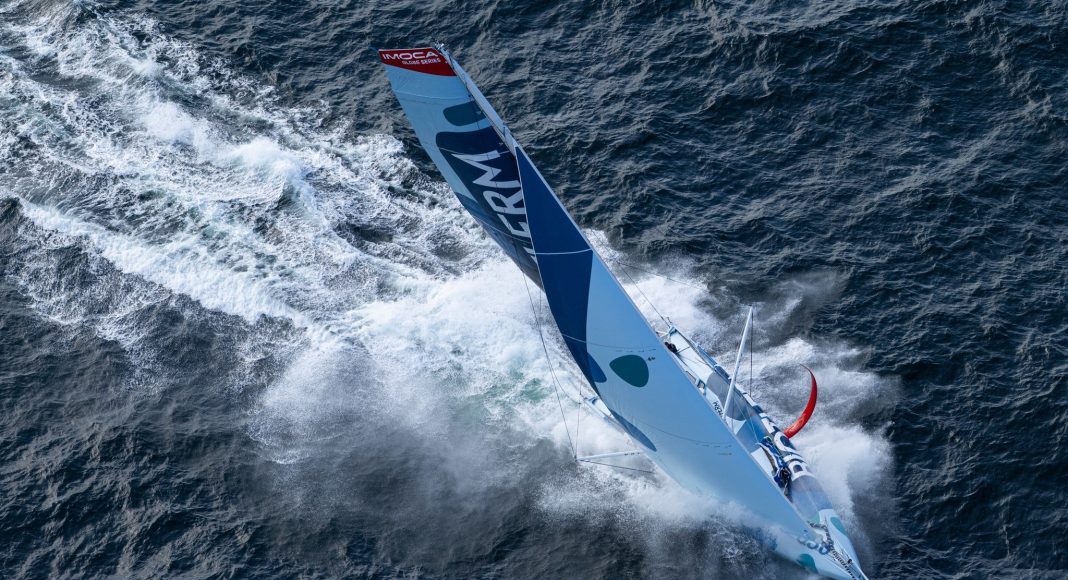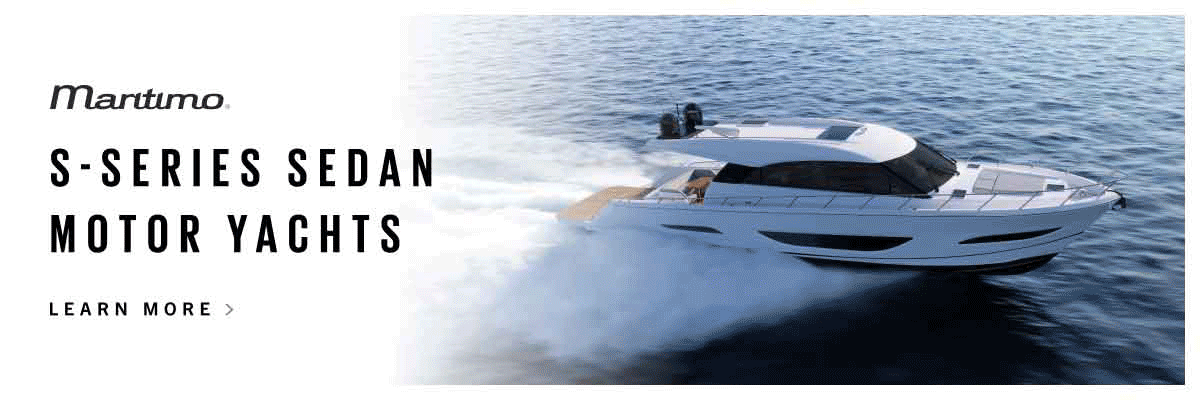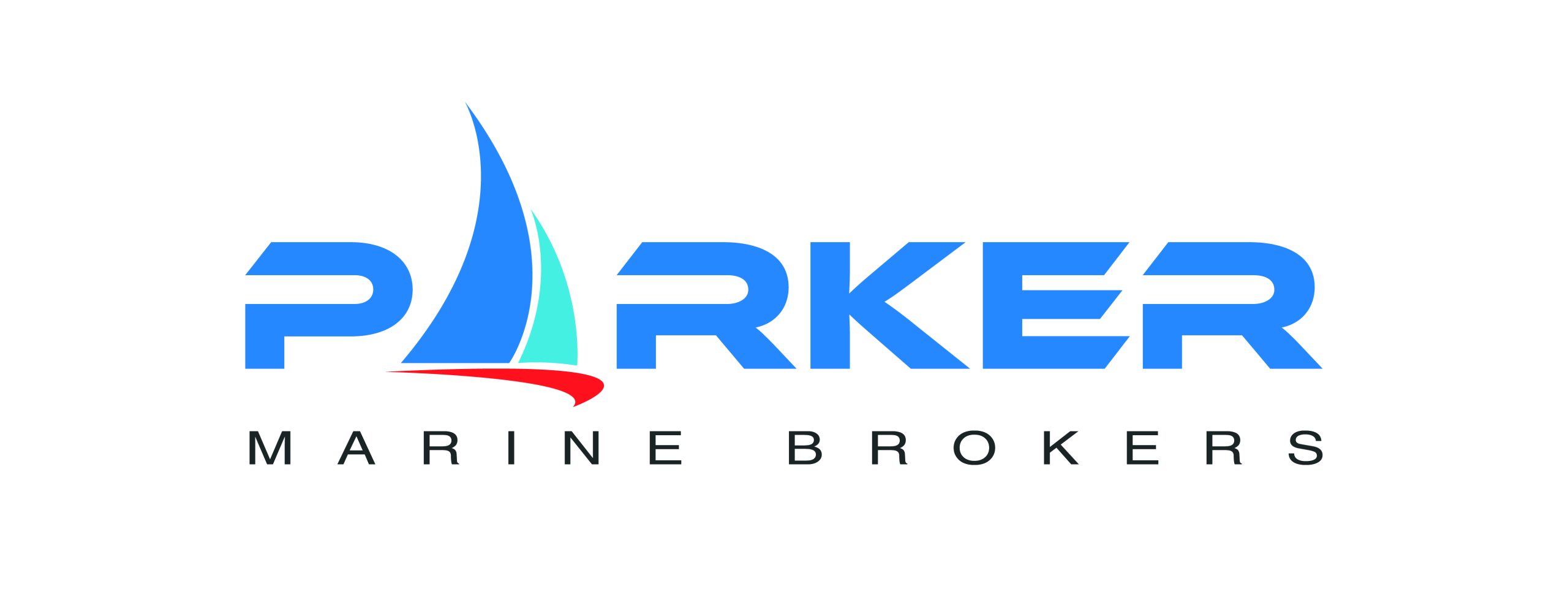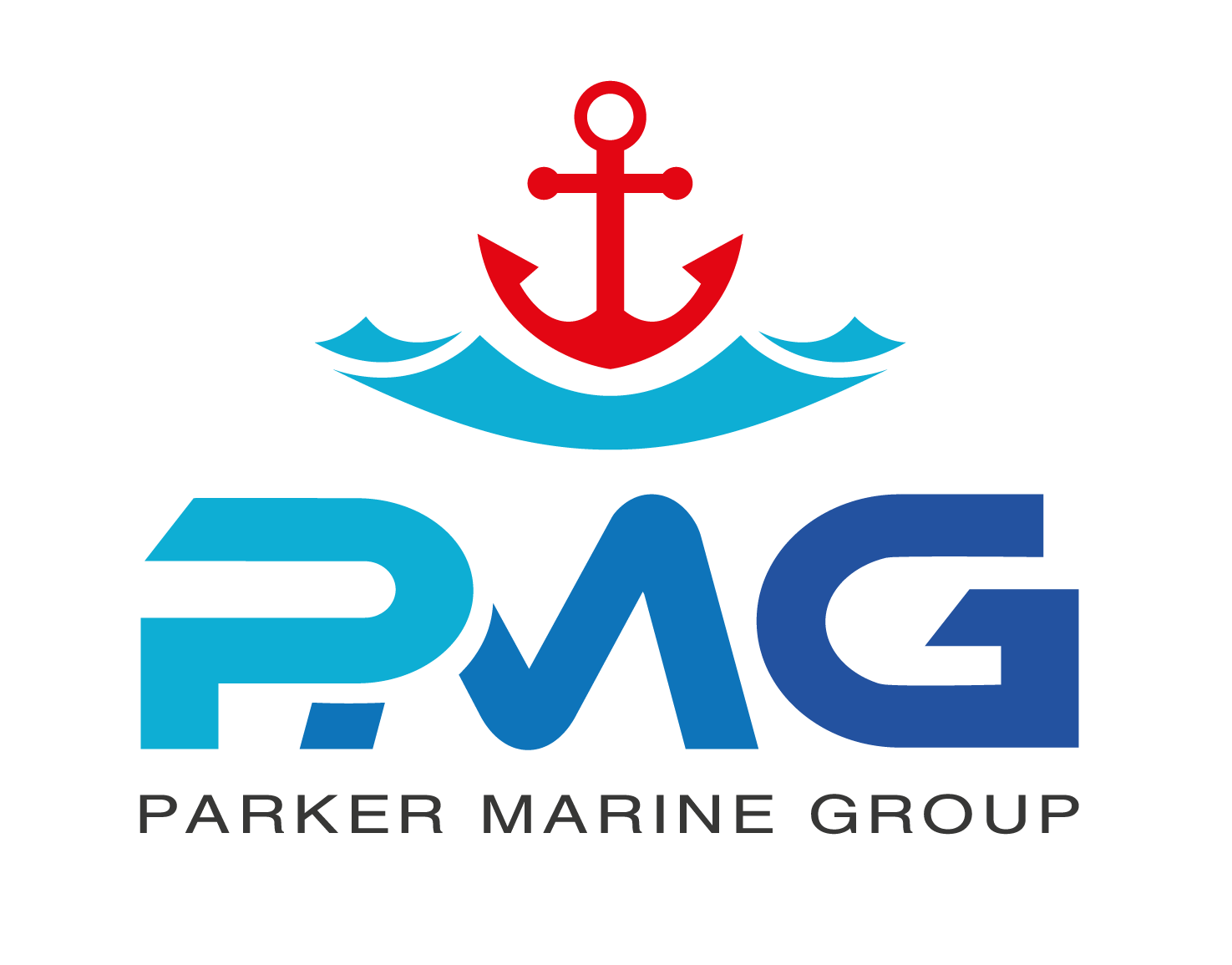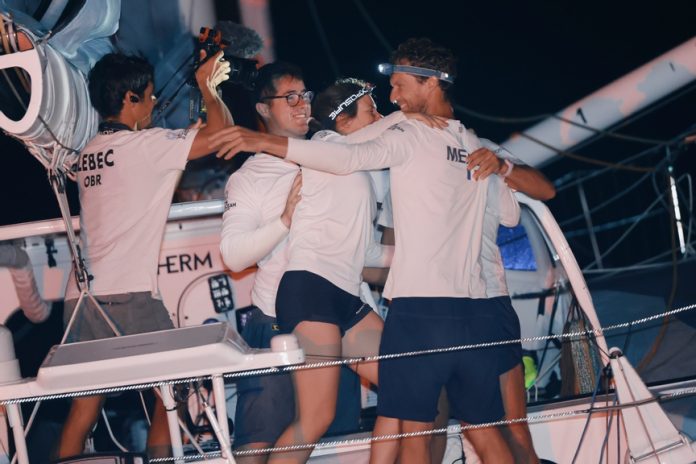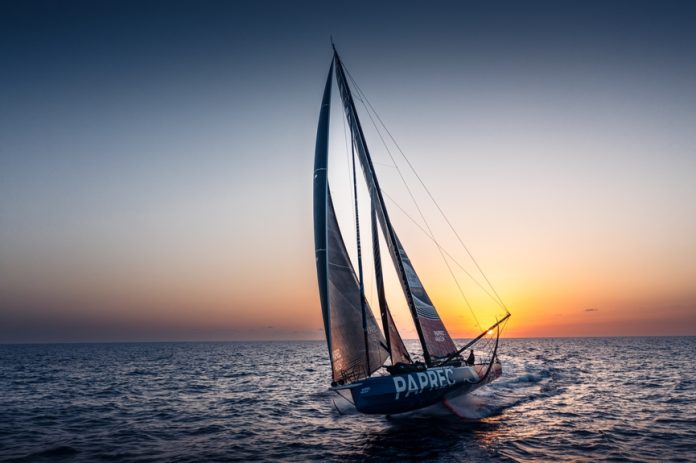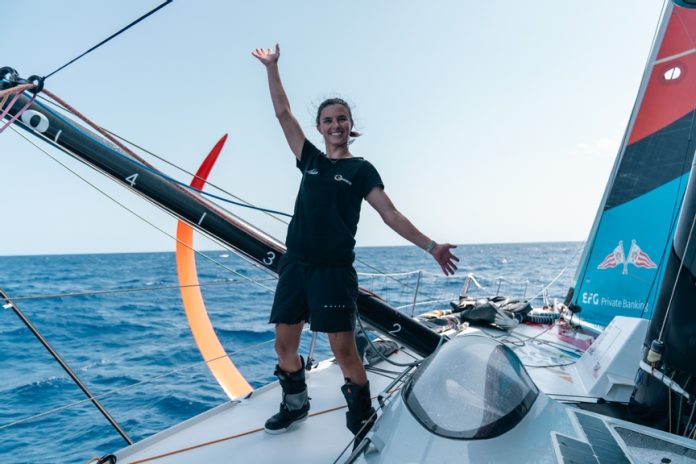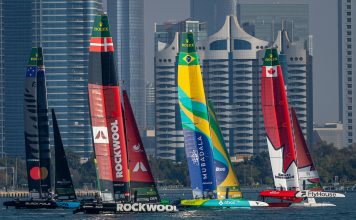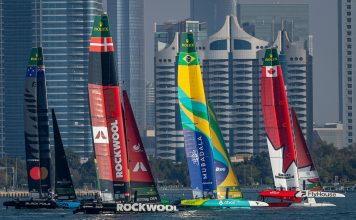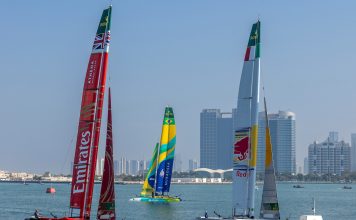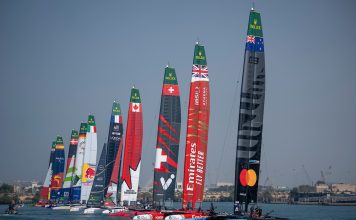Kiel turned on the charm for the start of The Ocean Race Europe 2025. Flags flew along the Kiellinie promenade, brass bands played, and fans packed the waterfront. Out on the water, a flotilla of spectator boats lined the fjord, close enough for the crews to hear the applause as seven IMOCAs lined up for the first leg to Portsmouth.
It had been a week of sailor parades, speed runs and warm summer weather, but when the gun went, it was straight down to business. The 850-nautical-mile course would be packed with hazards — wind farms, rocky coasts, narrow channels — but no one expected the first drama to come within a mile of the start.
The collision
With seconds to go, Team Holcim PRB, skippered by Rosalin Kuiper, hit the line at speed with rights on starboard. Just above, Allagrande Mapei Racing, with Ambrogio Beccaria on the helm, powered in under a big masthead sail. As the breeze built, Holcim PRB broached, Mapei heeled hard, and the two boats came together. Mapei’s headsail tore, and a gash opened in Holcim PRB’s port topsides.
The Ocean Race Europe 2025: From festival to fallout in the first mile
“I’m sad to be back here now,” Beccaria said after returning to Kiel. “We only did one mile of the race. It’s super sad for our competitor also… we’re not giving up until there’s no chance.”
Kuiper was equally blunt. “We had to retire because of damage to our hull. It’s very disappointing for our team, and for Allagrande Mapei and The Ocean Race as well. We’ll repair the boat ASAP and aim to be on the starting line in Portsmouth.”
Race Director Phil Lawrence confirmed both teams had suspended racing and that Holcim PRB had lodged a formal protest against Allagrande Mapei.
Shore and social reaction
The news broke quickly. Holcim PRB’s Facebook page lit up with FLASH NEWS 🚨 posts confirming the collision, followed by calmer updates and a pledge to keep fighting. Beccaria’s post was just a sad-face emoji and a photo. Supporters responded with encouragement — “Tonight it gets repaired, tomorrow you set off again” — alongside a few sharp reminders that even professionals can misjudge the opening mile.
Tactics take over
While those two headed for the dock, the rest of the fleet pressed on, and the focus shifted to boat speed and strategy. Paprec Arkéa chose the left-hand end of the line — clean air but lighter breeze — while Biotherm started in the middle with clear lanes to accelerate.
Once free of the start zone, sail selection became the hot topic. Crews weighed the trade-off between hoisting larger headsails early for instant power versus keeping them stowed to reduce drag. Biotherm held their bigger sail on deck, prioritising top speed in the steady breeze. Paprec Arkéa had theirs tucked down and ready but weren’t in a rush to hoist. The call was all about timing — commit too soon and you drag; wait too long and you risk being underpowered when the wind shifts.
Navigation choices also came into play. Skippers and navigators debated whether to position upwind or downwind to catch the next favourable shift, all while managing foil trim and apparent wind angles to keep speeds above 20 knots. Ahead lay the Danish straits, wind farms, and the Great Belt Bridge — each a potential shake-up point.
Early points and the night’s leaderboard
The Kiel Lighthouse scoring gate provided the first big opportunity. Biotherm’s combination of start position, sail trim, and lane management earned them two bonus points. Paprec Arkéa followed for one, with Canada Ocean Racing – Be Water Positive taking third.
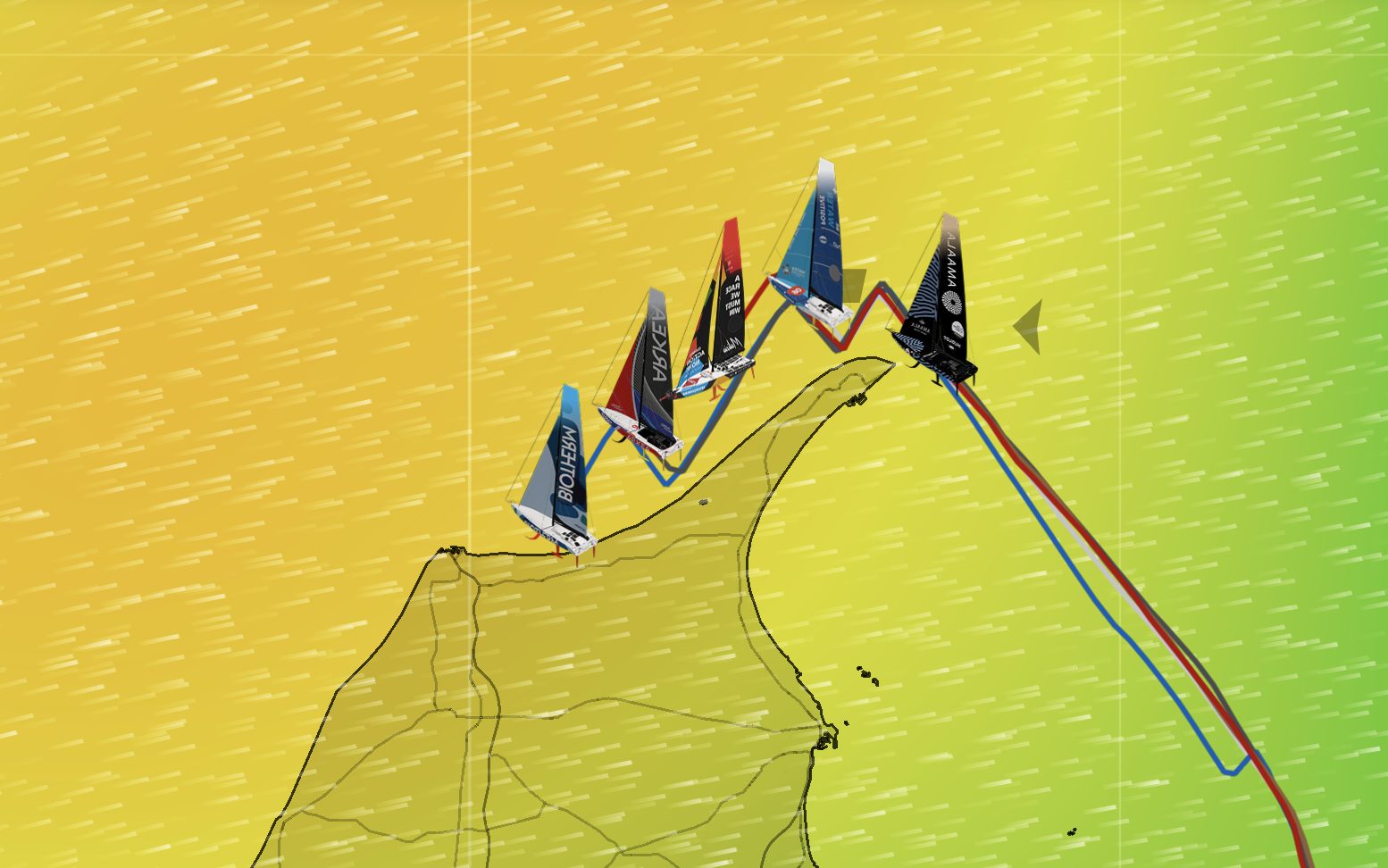
By nightfall, Biotherm had converted that early momentum into the overall lead. Paprec Arkéa sat in second, still in touch, and Team Malizia had climbed into third after a measured opening. Be Water Positive was fourth, followed by Team Amaala in fifth. Holcim PRB and Allagrande Mapei remained sixth and seventh, working against the clock to rejoin.
The long game
For Biotherm, the choice to hold off on extra sail early was paying off in consistent speed. Paprec Arkéa’s patient readiness kept them in striking distance, while Malizia’s climb showed the value of well-timed gear changes. With winds expected to ease north of Denmark, the ability to shift gears quickly — in both sail plan and mindset — could make the difference.
The race is only hours old, but the first leg has already served up a reminder: in The Ocean Race Europe, fortunes can change in a mile.








